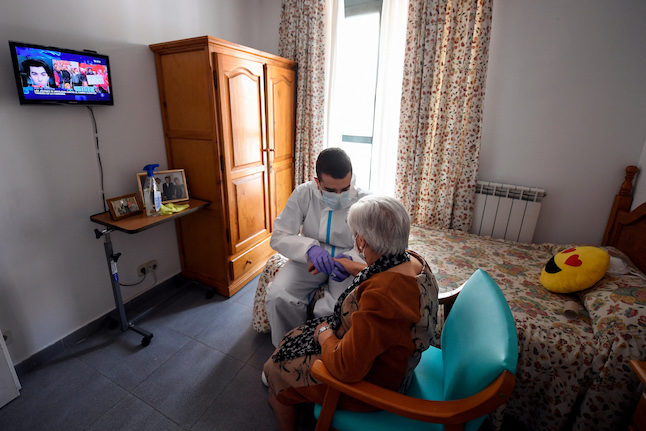Reader question: What happens if someone moves to Spain and then needs to go into a care home because of old age or illness? Who pays? Does it make a difference if you worked in Spain and paid into the Spanish system, or if you moved here after retirement?
This is a common question for people who retired in Spain from abroad and those who worked here and want to retire in Spain too.
According to a new survey from YourOverseasHome.com, four in ten respondents named Spain as their dream retirement location.
Per the latest statistics from Spain’s National Statistics Institute (INE) from 2022, there are 415,517 foreign residents aged 65 and over in Spain.
This means that as well as having to provide services for the elderly Spanish population it is necessary to provide them for the foreign population too.
According to real estate giant Knight Frank in its latest European care homes report, by 2040, 15 percent of the population of Spain will be over 75.
So what happens when you can no longer take care of yourself – what rights do you have to access Spanish care homes and will you have to pay for it all?
The good news is that there are no specific rules preventing foreign nationals from living in a Spanish care home – provided they have the legal right to reside in Spain. This means being from an EU country, protected under the Withdrawal Agreement if you are British and moved before Brexit, or have the appropriate visa for third-country nationals.
Traditionally, the care of the elderly in Spain has been taken over by family members who become full-time caregivers so Spain has a less developed care home market than other countries such as the UK.
According to Knight Frank’s European care homes report, Spain and Italy only spend 0.9 percent of GDP on long-term care provision.
That being said, there are several different care home options in Spain, some of which even have specifically been set up by foreigners. For example, the Norwegian government has created several care homes in Spain for its citizens who have retired abroad.
There are several different types of care homes for the elderly in Spain, depending on the type of level of care that you need. These include:
Residental care home – Residencia para personas mayors/ancianos
Nursing home – Residencia con servicos de asistencia médica
Hospice – Centro de cuidados paliativos
Retirement housing – Viviendas aptas para jubilados
Who pays?
According to Info Residencias, the website for geriatric assistance in Spain, if you need to enter a care home in Spain, you should go to the social services of your town hall (ayuntamiento).
They will consider your health, economic and social situation and will decide if you are eligible to be sent to a care home or if you should be provided with care at home instead.
If you are deemed eligible, they will assign you either a place in a public or private residence, depending on your financial situation.
If you recently retired to Spain and have not worked or paid into the social security system, however, it is unlikely that you will be placed in a public care home and will probably have to pay for a place in a private care home.
Info Residencias says that “a private residence for the elderly in a large city ranges from approximately €1,400 to more than €2,500 per month. Outside of the big cities, the prices may be somewhat lower, but not much more”.
While Knight Franks writes in its report that Spanish care home fees range from €1,800 to €2,200 a month, depending on the region and quality of accommodation.
READ ALSO: How Americans can retire in Spain
How can you pay?
Pension
If your pension plan is enough to cover the cost of the care home fees, then they will usually be paid for that way.
There are however several other ways of paying for care homes suggested by the Spanish authorities. These include:
Reverse Mortgage
The Reverse Mortgage (hipotecas revertidas) is a loan for people over 65 who own a home in Spain. Financial entities or insurance companies will typically pay you a monthly income which is secured against your home.
However, one downside to this is that if more costs and debts rack up, then you could lose your home and won’t be able to pass it on to your children.
Programa Pensium
Another way that your home can be used to help pay for a care home is through the Programa Pensium. If you sign up for the programme, your home will be rented out, and contributions made for you on top of that towards your care. The management of the rental of your property will also be taken care of so that your family doesn’t have to worry about this as well.
This way you get to keep your home and your family can do with it what they want when you pass away. It also gives you flexibility, allowing to you cancel the program at any time.
Britons
Certain benefits that cover care costs are not available to non-EU citizens who have never worked or paid social security in Spain.
The UK Government does not have any reciprocal arrangements to cover overseas residential or nursing care for Brits living in Spain, so you will not be able to rely on help from back home, but will be able to use your pension from the UK if you receive it in Spain.



 Please whitelist us to continue reading.
Please whitelist us to continue reading.
Member comments